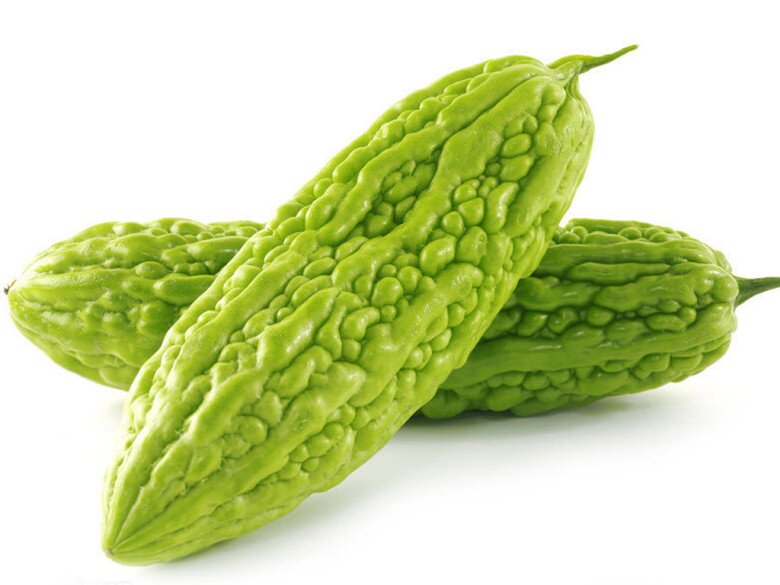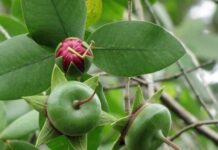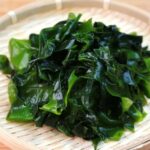Inspecting the Skin: The Secret to Identifying Deliciousness
The skin is the most revealing part when it comes to the quality of bitter melon. Upon close inspection, you’ll notice the surface is dotted with bumps and prominent ridges.
If the bumps are large, sparse, and evenly distributed, it’s a sign of a bitter melon with thick, tender flesh and a mild bitterness. These melons, when cooked, offer a refreshing taste, perfect for soups, stuffing, or stir-frying with eggs.

Conversely, small, densely packed, and unevenly distributed bumps typically indicate older bitter melons with thinner flesh and a more intense bitterness. These are favored by those who appreciate the distinct bitter flavor.
Examining the Shape: Length or Width Determines Taste
Beyond the skin, the shape of the bitter melon also reveals much about its qualities.
– Long, tapered fruits with a pointed tip and even body: Usually young melons with smaller pulp, crisp flesh, and a slightly sweeter taste, though the bitterness is more pronounced.
– Fruits with a larger head and shorter body: These have thicker flesh and a milder bitterness, suitable for those who can’t tolerate intense flavors.

Simply put, for a light, mildly bitter dish, opt for round fruits with a slightly larger head; for a bold, distinct flavor, choose the long, tapered ones.
Color: A Crucial Factor in Selecting Bitter Melon
The color of the skin is the clearest indicator of whether the fruit is young or mature.
– Fresh, young bitter melons have a vibrant emerald green or bright green color, with a glossy skin. These are crisp, mildly bitter, and retain their characteristic flavor.
– Melons with a yellowish or pale orange hue are signs of overripe or long-stored fruits, with softer flesh, less crispness, and reduced bitterness.

– Dark green, slightly dull melons offer a stronger bitterness, ideal for those seeking the full, authentic flavor of bitter melon.
– When selecting, prioritize fruits with an even green color from stem to base, avoiding those with bruises, yellow spots, or wrinkled skin.
Testing Firmness: A Hands-On Approach to Choosing the Right Fruit
– Holding the melon in your hand, you can gauge its freshness by gently squeezing it.
– Young, fresh melons feel firm, with taut, slightly hard skin and a weightier feel for their size.
– Older or long-stored melons are softer, yielding slightly to pressure, with wrinkled or cracked skin. These often have more seeds, less crispness, and a milder flavor.
Checking the Stem: A Small Detail That Reveals Freshness
– The stem is the easiest part to inspect for freshness.
– A fresh, green stem without wilting or darkening indicates a recently harvested melon, retaining its crispness, sweetness, and natural aroma.
– A wilted, brown, or darkened stem suggests the fruit has been harvested for a while, often resulting in softness and diminished flavor when cooked.

Prioritize Straight, Evenly Developed Fruits
Bitter melons with a straight shape and even body typically receive uniform sunlight during growth, resulting in balanced development, firm flesh, and a milder bitterness. Conversely, curved or misshapen fruits often receive partial sunlight, leading to a more intense bitterness and uneven quality.
Choose Firm, Medium-Sized Fruits
Opt for medium-sized fruits that feel heavy and firm when held. These are signs of a bitter melon with ample flesh, fewer seeds, and a mild bitterness. Smaller fruits tend to be more bitter, while overly large ones can be spongy, with bland flesh and less flavor.
Avoid Bruised or Discolored Fruits
Fruits with bruises, scratches, or soft spots indicate damage or prolonged storage. When cooked, they often have an intense, harsh bitterness and lose their natural crispness.
Selecting delicious bitter melon isn’t difficult; it just requires a keen eye for color, shape, stem, and firmness. With these tips, your family meals will be enhanced with refreshing, nutritious dishes made from perfectly chosen bitter melon.
3 Everyday Vegetables to Lower Blood Fat and Stabilize Blood Sugar Levels
In the daily meals of Vietnamese people, there are humble vegetables that offer remarkable health benefits. Research reveals that three common greens, often overlooked, not only aid in reducing blood fat levels but also help stabilize blood sugar, making them particularly beneficial for individuals with high cholesterol or diabetes.
“6 Amazing Health Benefits of Drinking Bitter Gourd Juice”
Bitter gourd juice is a nutritional powerhouse, offering a plethora of health benefits. This humble vegetable boasts an impressive nutritional profile, packed with essential vitamins and minerals that support overall wellness. From boosting immunity to regulating blood sugar, bitter gourd juice is a natural remedy with numerous advantages. Discover the fascinating world of bitter gourd juice and explore the myriad ways it can enhance your health and well-being.



































